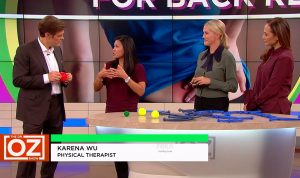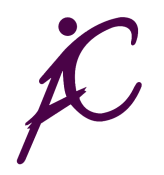 ActiveCare Physical Therapy, PC
ActiveCare Physical Therapy, PC
29 West 38th Street
Suite 601
New York, NY 10018

Physical Therapy for ‘Kinky’ Necks
By Karena Wu, as published in Total Food Service.
The neck is a very important body part. It connects the head and brain to the rest of the body. It turns the head to look in all directions. It is a highly sensitive area that feels good when caressed or rubbed. And it sucks when you wake up with a ‘kink’ in your neck.
The neck consists of a series of 7 vertebrae (spinal bones) and intervertebral discs that make up the spinal column in the cervical or neck region. There are nerves that exit out of both sides of the spinal column in between each bone and disc. Each nerve communicates with the arm muscles from the shoulder all the way down to the fingertips. It is a delicate balance of structures that are mobile and stable that yield movement, stability and power in the upper body.
Occasionally, one single level can get stuck. It can happen overnight when you sleep or it can happen when you turn your head a funny way and the muscles don’t engage at the right time. It occurs as we scrutinize our work in the kitchen (plating) or spend long hours at the computer doing research for new recipes or running the business. With all of us using gadgets of varying types and the long hours working, it is much more common. The joints (spinal bones) lock up. This is called a facet joint lock, otherwise known to the layperson as a ‘kink’ in the neck.
This is a simple musculoskeletal injury. Common symptoms of this acute injury include point tenderness over the facet joint, muscle guarding (stiffness in the muscle), restricted range of motion, pain in the neck and if the nerve gets ‘pinched, pain radiating into the arm. It can reoccur if the neck is tight and weak or if you are fatigued. Oftentimes the person walks around with their head held very stiff and when they have to look in the painful direction, will rotate their entire trunk to be able to look in that direction. It’s called the ‘old man turn’.
These conditions can easily be fixed by a physical therapist. After full assessment, the therapist can manually mobilize the joint that is stuck, allowing for normal motion in that joint segment. They will also do soft tissue mobilization of the surrounding musculature to help it calm down and release its hold on the joint. Both of these manual therapies will help to restore normal physiological range of motion, which means you will be able to turn your head, bend your head, and look up and down without pain or limitations.
Oftentimes, posture plays a role in full restoration of motion and elimination of pain. Don’t forget to address how you hold yourself upright. If your head is held forward in front of the trunk, for every 1 inch the head is forward, it increases the weight being transmitted in the cervical spine by 10 pounds. So don’t forget that posture is important for all parts of the body. Before that plate leaves the kitchen, exercise good posture as you expedite and when your customer comes to the back to say thank you, you can greet them without that ‘kink’ in your neck!
Click here to read the original article, or visit us online at activecarephysicaltherapy.com to book an appointment.


